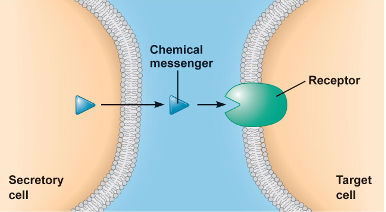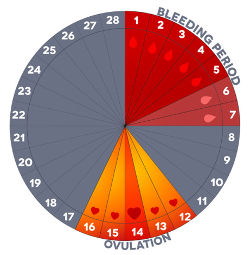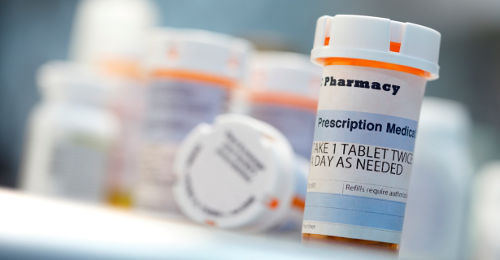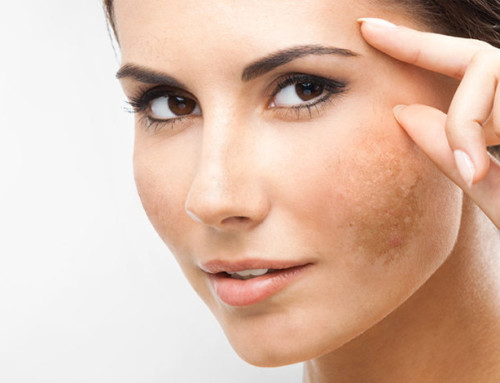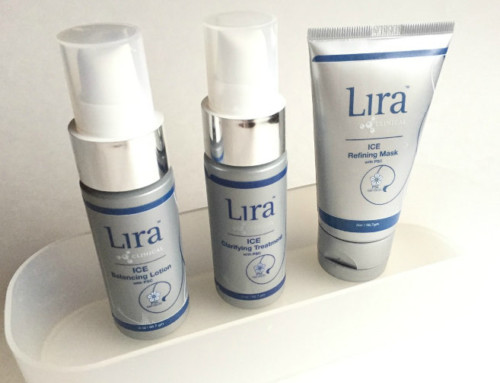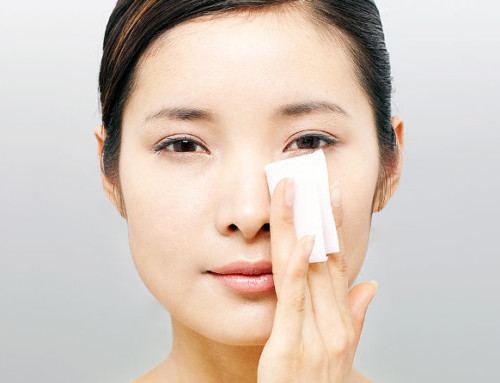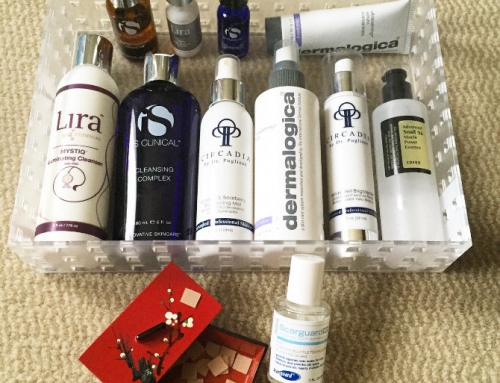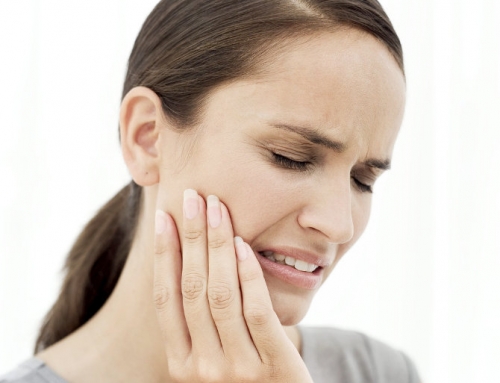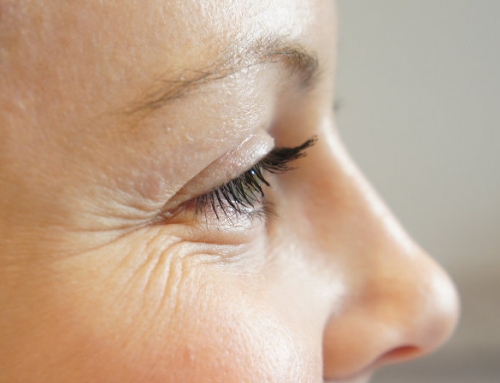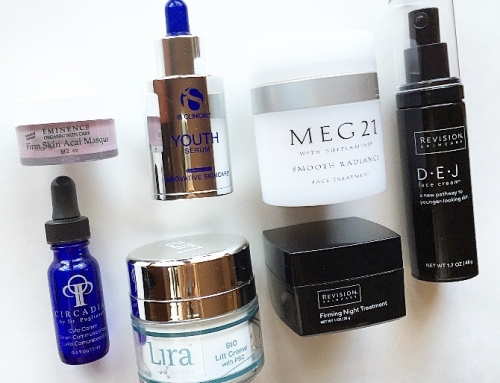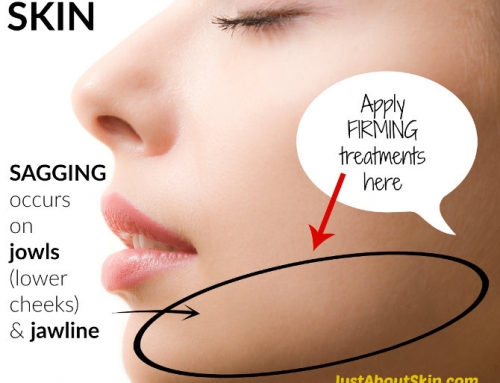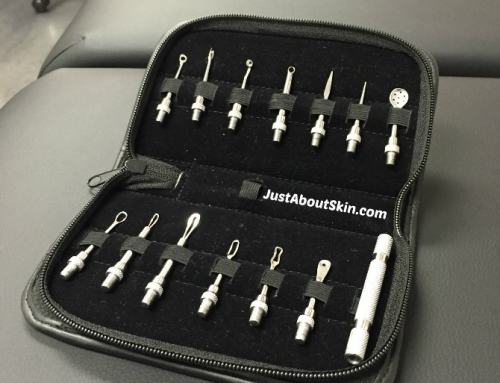Hormones and skin. Ai-yai-yai. The two words together can either be a godsend or a curse, depending on which receiving end you’re on.
No doubt we’ve all experienced their effects. But it’s hard to know exactly what they’re doing inside our bodies because they’re all working in the background.
Most of us innately understand that hormones play a vital role in our daily functioning. Every aspect of how we function, feel, and look is tied to hormonal activity.
But do you know what effects hormones have on skin? Hormones play an enormous role, as you may have guessed (especially if you’re female). And that is today’s topic.
The study of hormones, which is called endocrinology, is a vast field. The interactions of hormones inside the body are complex, which is why many problems of a hormonal nature, including skin problems, can be tricky to treat correctly.
In today’s post, I”ll give a simple overview of what hormones are (just enough to give you some background) and go over on a high level how hormones affect skin. Then, in upcoming blog posts I’ll dive deeper into some common hormone-related skin problems.
What Are Hormones?
In a nutshell, a hormone is a chemical messenger. Its job is to deliver a signal. That’s all you need to know.
Hormone = Signal
Signaling is one method of communication in the body. The human body, with its many moving and complicated parts, requires a system of communication to work. Chemical signals relay messages between cells, tissues, and organs.
Hormones are one class of signals. They are released (from various glands) and they act on a specific receptor of a target site (a cell, tissue, organ). Or the level of the hormone in the bloodstream (how much there is) is the ‘signal’ itself.
Another example of a signal are peptides, which are short protein fragments. Peptides in skincare products are designed to assist or speed up the communication that occurs naturally among the biological molecules inside skin. Better or faster communication means things get made faster (e.g. collagen) or repaired faster (e.g.DNA). This is why peptides are so popular in anti-aging skincare. As we age, every process in the body slows down. Peptides lend a hand by jumpstarting some of those aging processes.
Hormones are controlled by the brain (the hypothalamus and pituitary gland). The only reason why I mention this is to emphasize the difficulty of influencing or even controlling them. The release of hormones is governed by your brain and a system of feedback loops. These are complex interactions.
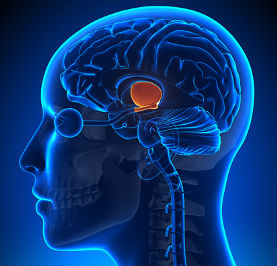 When you have a hormonally-induced skin problem, such as acne or melasma, it is difficult to change its root cause (the action of the hormones themselves). Only drugs can do that. Topical skincare products don’t. Topical products (i.e. over-the counter, non-prescription, retail) do not alter functioning, only the outer appearance of skin. If they do happen to alter function, it’s illegal (at least here in the U.S.).
When you have a hormonally-induced skin problem, such as acne or melasma, it is difficult to change its root cause (the action of the hormones themselves). Only drugs can do that. Topical skincare products don’t. Topical products (i.e. over-the counter, non-prescription, retail) do not alter functioning, only the outer appearance of skin. If they do happen to alter function, it’s illegal (at least here in the U.S.).
So the point of bringing this up is to set your expectations. It is important to realize that when you have a skin problem of a hormonal nature, there is only so much you can do. You need to be patient. You need to focus your efforts on controlling symptoms, rather than eradicating your problem altogether (which is not realistic).
And most importantly, you need to leave your body alone. In other words, don’t mess with your hormones – on your own, that is. Any kind of drug or even herbal supplement that involves hormones should be taken only under the guidance and care of a medical doctor. Hormones have profound and wide-reaching effects inside the body. They don’t just affect one function or one area of the body. So even small changes to hormone levels can create imbalances with major consequences.
Your body will sort itself out (eventually), assuming you don’t have a chronic or acute hormone disorder.
So, back to signaling, the state of your skin is largely influenced by a number of chemical signals. Let’s look at the major ones in skin – the ones that everyone will encounter at some point in life.
Male Hormones and Skin
The title of this section is “Male Hormones,” but it is misleading because women have male hormones too, just in different proportions. But for the sake of organization and learning, it’s easier to call this section “male hormones.”
Can you name a male hormone? If you answered Testosterone, that’s perfect!
Testosterone is a sex hormone produced in both sexes, but predominantly in males. Hormones that are predominant in men are called androgens (another word for male hormones). When boys enter puberty, they start to produce testosterone in large amounts. Testosterone stimulates the development of sperm and secondary male sex characteristics, such as facial and body hair.
 Testosterone also affects the physiology of skin (greatly). Basically, it increases sebum production, by stimulating the sebaceous gland attached to every follicle (pore) in skin. Skin becomes oilier during puberty because of greater testosterone. Testosterone production in men starts to decline after age 30, and it continues to decline steadily and gradually into old age.
Testosterone also affects the physiology of skin (greatly). Basically, it increases sebum production, by stimulating the sebaceous gland attached to every follicle (pore) in skin. Skin becomes oilier during puberty because of greater testosterone. Testosterone production in men starts to decline after age 30, and it continues to decline steadily and gradually into old age.
The #1 effect of higher oil production is acne. More oil filling up inside pores creates an attractive habitat for acne bacteria. Therefore, acne is a common result of any testosterone-related changes in the body.
So when do men experience hormone-related skin problems? Primarily in these two times of life:
1. PUBERTY
For boys, a large increase in testosterone production starts during puberty (around age 10) and continues throughout the teen years and early 20’s.
I have already gone over acne a fair amount throughout this blog. So I won’t be diving into the pathology of acne here. If you’d like to learn more about how acne forms, here’s a good place to start.
Just remember:
MORE TESTOSTERONE ==> MORE OIL ==> GREATER CHANCE OF ACNE
2. ANDROPAUSE
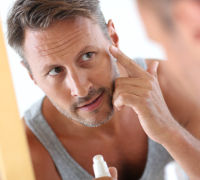 This is a period of time that one might call “male menopause,” though it’s not related to reproductive function, which for men does not end at a specific age as it does for women. It’s more about the physiological changes associated with lower testosterone levels in middle age, such as loss of muscle strength and lower libido. In fact, there isn’t a consensus in the medical community on whether men do in fact go through a defined period of “menopause” when they reach their mid 40’s/early 50’s.
This is a period of time that one might call “male menopause,” though it’s not related to reproductive function, which for men does not end at a specific age as it does for women. It’s more about the physiological changes associated with lower testosterone levels in middle age, such as loss of muscle strength and lower libido. In fact, there isn’t a consensus in the medical community on whether men do in fact go through a defined period of “menopause” when they reach their mid 40’s/early 50’s.
But there is certainty over the gradual decline of testosterone. With lower testosterone levels, oil production declines too, and men may see that manifest as drier skin.
Female Hormones and Skin
Women have a different set of dominant reproductive hormones. Here are some examples that may be familiar to you:
- Estrogen
- Progesterone
- Luteinizing hormone (LH)
- Follicle stimulating hormone (FSH)
- Inhibin
- Oxytocin
- Prolactin
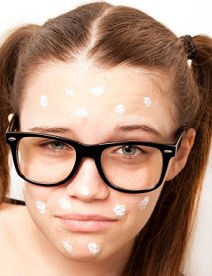 As I mentioned above, women have the ‘male’ hormone testosterone too – just a small amount (the testosterone in women is converted to estrogen in the ovaries). Likewise, men have some ‘female’ hormones, such as estrogen, FSH, and LH – but in small amounts.
As I mentioned above, women have the ‘male’ hormone testosterone too – just a small amount (the testosterone in women is converted to estrogen in the ovaries). Likewise, men have some ‘female’ hormones, such as estrogen, FSH, and LH – but in small amounts.
The hormones that primarily concern women with respect to skin are: Estrogen, Progesterone, and Testosterone.
These hormones play such a ubiquitous role in a woman’s life, their impact on skin occurs over more phases of time.
Women experience hormone-related skin changes during:
1. PUBERTY
An increase in testosterone affects girls during puberty just as it does for boys. The consequences are the same. More oil production leading to breakouts, especially when combined with inconsistent skin hygiene.
2. MENSTRUAL CYCLE
Hormone levels fluctuate before, during, and after menstruation (the period of bleeding that occurs approximately every month, or 28 days on average, in women).
What is commonly called “hormonal acne” tends to occur in the week leading up to menstruation (Days 21-28). Estrogen levels are low at this time, which allows testosterone to act unopposed (more oil production).
It is very common to see breakouts along the jawline (lower cheeks) and chin during this time. If you notice your breakouts consistently appearing in these areas, there’s a good chance that it’s hormonally-driven (by a change in hormone levels), rather than some other trigger (such as a product that clogged your pores, though that too can of course cause breakouts there).
3. ORAL CONTRACEPTIVE USE
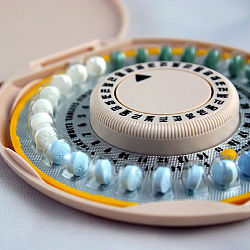 Besides preventing pregnancy, oral contraceptives (e.g. birth control pills) are sometimes prescribed to reduce severe menstrual symptoms, such as excessive bleeding or cramping. These pills contain estrogen and progesterone in different proportions (depending on the drug).
Besides preventing pregnancy, oral contraceptives (e.g. birth control pills) are sometimes prescribed to reduce severe menstrual symptoms, such as excessive bleeding or cramping. These pills contain estrogen and progesterone in different proportions (depending on the drug).
Birth control pills are also prescribed to control bad cases of acne (in women). By elevating estrogen and progesterone levels, they effectively reduce the oil-stimulating effects of testosterone (more on this below).
Additionally, the use of these pills changes the balance of hormones in the body, which in turn may cause other skin changes, such as pigmentation.
4. PREGNANCY
Anytime there are changes in hormone levels, such as during menstruation, oral contraceptive use, pregnancy, menopause, or when there are hormone disorders (e.g. thyroid) or high stress events, it’s likely to have an effect on skin too – for better or worse (more often worse, unfortunately). Skin is such a reflection of the inner workings of the body and what we put in it.
 There are many changes associated with pregnancy. Many women experience improved skin and hair during the nine months of pregnancy. Skin during this time may be described as having the “pregnancy glow.” But there are complaints too.
There are many changes associated with pregnancy. Many women experience improved skin and hair during the nine months of pregnancy. Skin during this time may be described as having the “pregnancy glow.” But there are complaints too.
One of the biggest complaints is the appearance of dark spots, patches, or areas of discoloration. In other words, more pigment. Pregnancy, along with other sources of hormonal fluctuations, may increase the amount of pigment produced inside skin, which may appear not just on the face but also on other parts of the body.
Take melasma, the appearance of patches of darker pigmentation in the central part of the face. It tends to appear during or after pregnancy – more so in certain skin types or ethnicities predisposed to it. Though it is overwhelming present in females, males can get it too.
Melasma is a stubborn and hugely challenging condition to treat, thanks to being very resistant to products.
5. MENOPAUSE & PERIMENOPAUSE
Menopause is the time when reproductive capability comes to an end for women. The ovaries stop releasing eggs and it is no longer possible to bear children. The average age of menopause is around age 55, but it can happen sooner or later.
 Perimenopause, or early menopause, is the period of time leading up to menopause – typically beginning in the mid-40s but can be as early as the mid-30’s. During this period, ovarian activity gradually slows down due to a decline in estrogen and progesterone production.
Perimenopause, or early menopause, is the period of time leading up to menopause – typically beginning in the mid-40s but can be as early as the mid-30’s. During this period, ovarian activity gradually slows down due to a decline in estrogen and progesterone production.
Some common signs of perimenopause are: uneven timing of menstrual periods, periods of a shorter duration, longer times between menstrual cycles, reduced blood flow, fatigue, and mood changes. I mention these in case you have noticed these changes in yourself.
Many women do not realize they are entering perimenopause, and so they do not consider that this could be the cause of their skin issues. If you think you may have perimenopausal symptoms and want to know for sure, a doctor can do blood testing.
Not surprisingly, the skin changes during perimenopause and menopause. The following may happen as a direct or indirect result of hormonal changes:
- Drier skin (all over or in some areas)
- Oilier skin (may co-exist with drier skin in other areas)
- Breakouts
- Appearance of larger pores
- Increased pigmentation, such as brown spots and melasma, and uneven skin color
- Loss of volume and firmness (less estrogen means lower collagen and hyaluronic acid production)
- Loss of radiance (less estrogen leads to a decline in epidermal turnover – lower production of new skin cells and slower rate of natural shedding)
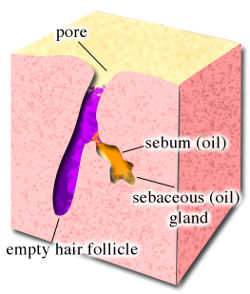 Does seeing breakouts on the list surprise you? Breakouts are not normally associated with this age group. It’s the effect of testosterone again.
Does seeing breakouts on the list surprise you? Breakouts are not normally associated with this age group. It’s the effect of testosterone again.
When estrogen and progesterone levels are lower, the effects of testosterone are magnified. It’s not that there is more testosterone. It’s that the existing testosterone is unopposed (by estrogen and progesterone) and therefore exerts a stronger force in skin.
As you know from above, testosterone stimulates oil production. Pores can become more clogged, enlarging the pore and creating the appearance of larger pore size. This is why you may see breakouts at the same time there are areas of drier skin. The breakouts are fewer in number, but they tend to be deeper and more inflamed (and therefore take longer to heal).
Of course, all the normal signs of aging you would expect to see with age, such as wrinkles, sagging, loss of radiance, and greater discolorations, are happening at the same time, irrespective of whether there are hormonal changes. They are happening simultaneously for different reasons, with the root cause being the same for all – a loss in the “good” molecules that keep our machinery running, and an increase in the “bad” ones. Aging is the process of the “bad” exceeding the “good,” until the day the machinery just conks out.
Medications and Hormones
As you might guess, medications can cause hormonal changes, especially if they’re intended to influence a particular hormone. This gets into medicine, which is way beyond the scope of this blog post. But it’s worth mentioning because if you have a skin problem that perplexes you, and you cannot figure out why your skin has suddenly changed, consider whether you are taking any new medications.
It’s not the first thing that usually comes to mind. But it’s certainly a factor. Many medications affect hormone function.
The Hormone Takeaway
You’re reading this and perhaps thinking – How depressing, this sucks. Yes it does! 🙂
But look at the big picture, which is that hormonal fluctuations are an inevitable fact of life. It is what it is, and fortunately, we have skincare products and modalities (injectables, procedures, and medicines) that are growing more sophisticated year by year. We can now do so much more to maintain our skin, delay signs of aging, and even alter skin surgically when desired. Research in the areas of longevity and genetics are more exciting than ever. So net-net, it’s not so bad. We at least have some options.
But the point of this article is this:
Any kind of hormonal change can and often has an effect on skin.
Hormonal fluctuations are normal during certain periods of time, for both men and women. When it comes to skin, the key thing is to understand when hormones are at work. That way, you can take appropriate measures to counteract those effects if it’s possible – as in the case of using birth control pills to reduce the severity of hormonal acne, or undergoing hormone replacement therapy during menopause.
Or better yet, you can look at your skin treatment choices through a more vigorous lens and question whether they will really help. You may decide that you can rely on topical products for a simple case of acne, or you may realize that more aggressive measures are necessary, such as in-office peels or IPL/laser treatments for melasma.
Stay tuned for more on the topic of hormones and skin.
Want new articles delivered straight to your inbox? Sign up here.
Recommended Reading:


